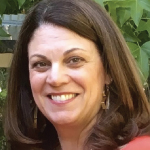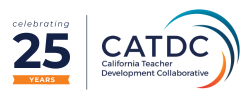Lean Into Discomfort: Developing Better Skills to Really Talk about Race in Schools

As we post this, events are unfolding in Charlottesville and across the nation that bring a new urgency to our need to increase our racial literacy. Yet, even as some of our school leaders denounce the white supremacy on display, there remain critical gaps and omissions in our words, our actions, and our understandings. Schools have a critical role in helping to develop young people who can speak to our racial legacies and identities. And they need teachers and school leaders to step up like never before.
As school people, we often value being kind and nice above all else – meaning that sometimes our “niceness” may be really acting as a buffer or a barricade. There is nothing wrong with being nice unless it prevents us from addressing real issues. Along the way, “niceness” has become a means for avoiding difficult conversations, especially conversations about race in the US. While looking at racial identity in our schools, researchers Arrington, Hall, and Stevenson noted the following:
In independent schools, we discovered a systematic ‘niceness’ that masked the hesitance of the schools to fully engage with the research. It took a long time for us to read through this niceness and understand that, while many of the people we encountered in the schools were pleasant to us and spoke encouragingly about our work, we were still not making the progress we had hoped. This same niceness manifests itself in a desire not to discuss the hard issues of race and racism in many schools.
One “hard” issue, in particular, is how white teachers will, despite their best intentions, participate in promoting racial stereotypes, implicit bias, and systemic racism. Oftentimes when an issue around race comes up, the adults get nervous, the discomfort is palpable, and we veer off course into a ditch of white denial and defensiveness of our “good” intentions. Peggy McIntosh, co-founder of SEED, may have said it best:
About six years earlier, black women in the Boston area had written essays to the effect that white women were oppressive to work with. I remember back to what it had been like to read those essays. My first response was to say, “I don’t see how they can say that about us – I think we’re nice!” And my second response was deeply racist, but this is where I was in 1980. I thought, I especially think we’re nice if we work with them.
To help white educators be more willing to “lean into discomfort,” to use Randolph Carter’s term, perhaps we need to focus on what our “niceness” can do to our students. For white students, we simply replicate the pattern of avoidance, showing them that when racial tension comes up, we just side-step the issue to avoid our own feelings that may be hard to manage. And for students of color, researchers Arrington, Hall, and Stevenson observed that, “without understanding and examining how the contexts of whiteness and ‘niceness’ surround and silence race dialogue, school programming for students of color is likely to fall short of reducing the emotional distress they experience in their schools.”
At our recent Equity as Excellence Conference, we focused on the following principles to help guide our work towards greater racial literacy:
- We can no longer be silent or avoid these topics. There is too much at stake, and if we really value education and its ability to transform, then we need to find ways to engage.
- Neutrality is a myth. The effects of the current political climate are real, and we ignore them at our own peril. See Jonathan Gold’s article from Teaching Tolerance on the myth of objectivity in his classroom. For more specific evidence, see the SPLC’s full report here.
- As Howard Stevenson asserts in Promoting Racial Literacy in Schools, this is not about your character; it’s about your competence. Just as there are skills I need to learn to be an effective math teacher, I need to learn the skills required to successfully navigate this terrain with my students. Nobody is born knowing how to address racism, but teachers do know how to guide young people through complex ideas. We do it all the time.
- Begin with your own experience: For example, here’s how I first wrote about understanding myself as a white teacher. Get clear on your own racial identity development first so you have a place from which to engage your students. When did you first notice race? How was race talked about when you were growing up?
- Ground your work in critical inquiry: You don’t have to have all the answers, but you can help your students find their way to credible resources by asking the right questions. Media studies is a great place to start. Check out KQED Mind/Shift’s new online hub.
And here are some excellent resources for even more ideas and strategies:
Resources for Educators to use in the Wake of Charlottesville
Explaining Charlottesville to my 7 Year Old
How “Nice White People” Benefit from Charlottesville and White Supremacy
7 Ways Teachers Can Respond to the Evil of Charlottesville, Starting Now
Teaching Tolerance: How White Parents Should Talk to Their Kids about Race
White Parents Here’s How to Start Talking to Your Children About Race
Yes, Race and Politics Belong in the Classroom
References:
(2003) Arrington, Hall, and Stevenson, “The Success of African American Students in Independent Schools”
(2017) E Denevi, “What If Being Called ‘Racist’ is the Beginning, Not the End, of the Conversation,” The Guide For White Women Who Teach Black Boys, Corwin Press.
(2014) “Peggy McIntosh Sets the Record Straight on White Privilege,” Colorlines,
(2013) H Stevenson, Promoting Racial Literacy in Schools. New York: Teachers College Press.
Photo Attribution by PhotosForClass.com
 Elizabeth Denevi is the Associate Director for Mid West Educational Collaborative, a non-profit agency that works with schools nationally to increase equity, promote diversity pedagogy, and implement strategic processes for growth and development. Previously, she served as Director of Studies & Professional Development at Latin School of Chicago. In this position, Elizabeth was responsible for the stewardship and integration of curriculum from pre-kindergarten through grade 12, as well as for the oversight and coordination of professional development and evaluation for all faculty.
Elizabeth Denevi is the Associate Director for Mid West Educational Collaborative, a non-profit agency that works with schools nationally to increase equity, promote diversity pedagogy, and implement strategic processes for growth and development. Previously, she served as Director of Studies & Professional Development at Latin School of Chicago. In this position, Elizabeth was responsible for the stewardship and integration of curriculum from pre-kindergarten through grade 12, as well as for the oversight and coordination of professional development and evaluation for all faculty.
